Now referred to as the ‘Black Summer’, Australia’s bushfire season of 2109-2020 was the worst on record. Quite simply, the fires were unprecedented. By March 2020, 18.6 million hectares had been burnt, more than buildings had been burnt (including 2,779 houses) and, most tragically, 34 people had lost their lives. On top of that nearly 3 billion animals, including threatened or endangered species, were either killed or displaced.

Considering Australia’s love of our native bushland, and our tendency to build houses as close to it as we can, that figure of 2,779 homes destroyed could easily have been higher. If there is a slither of hope to derive from the fires it is that, over recent years, we have started to develop a better understand of how to build a bushfire proof house.
Bushfire safe house design – building in bushfire prone areas
How do you know if your house (or the land on which you want to build a house) is in a bushfire zone? The relevant planning regulations vary by state (for example, in NSW you need to contact the NSW Rural Fire Service, while in Vic the relevant authority VicPlan).
If it turns out that you are in a bushfire zone, if you wish to do any building or renovation work, you need to undertake a Bushfire Attack Level (BAL) assessment. This is to determine the appropriate measures to follow to ensure the home is protected from a potential bushfire. For example, BAL 40 building requirements are more stringent than BAL 12.5 building requirements.
A homes assessment level measures how high the severity its risk to ember attack, radiant heat and direct flame contact is. BAL is measured in terms of radiant heat (kilowatts/m²).
These are the relevant BAL ratings:
- Bal LOW: Very Low Risk
- BAL 12.5: Low Risk
- BAL - 19: Moderate Risk
- BAL 29: High Risk
- BAL 40: Very High Risk
- BAL FZ: Extreme Risk
Which materials are good for a bushfire safe house?
Though there is no such thing as a flame zone kit, by choosing materials carefully, specifiers can go a long way to improving their expertise in bushfire proof house design.
Cladding - In terms of external cladding, corrugated iron is a sound choice for a fireproof house, as are some types of fibre cement panelling.
Timber - Care should be taken when using timber for decking and so forth. Fire resistant timbers include turpentine, red ironbark, blackbutt, merbau, red river gum. spotted gum, and silvertop ash are recommended for house designs for bushfire areas.
Windows & Glazing - It is a good idea to fit external metal shutters to all windows. In terms of window frame materials, aluminium and metal reinforced PVC are recommenced.
Steel Frames - Steel frames are a good choice because they are extremely durable and also fire resistant.
Exteriors - Apart from that, it is also important to consider gardens and landscaping. Always ensue that there is a 5m gap between house and garden and set the house as far as possible from native trees, ensure gutters are regularly cleaned of fuel.
Install a sprinkler system – One important feature of a fireproof house is a sprinkler system. These should spray water that is generally pressured to 300kpa.
There are several myths and misconceptions surrounding bushfire proof homes, among those who are not familiar with their construction. The most popular of these is that bushfire proof homes always end up looking like a bushfire bunker. In reality, unless they are in the most dangerous locations, they look much like standard houses. Even if you live somewhere like Kinglake, a town devasted by the 2009 Black Saturday fires, you can still build a bushfire safe house.
Bushfire proof house design - 10 of the best bushfire proof homes
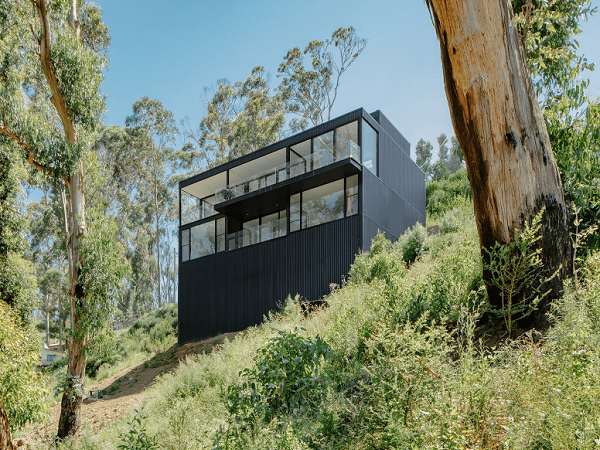
1. Durimbul Bushfire Resistant House
Located in Wye River, Vic and designed by Matt Goodman Architect, Durimbul Bushfire Resistant House was built to replace a house that was destroyed in a 2015 bushfire. Though perched on a hillside, it is fire resistant.

2. Bellbird Retreat House
Located at Killarney on the Gold Coast Hinterland in Qld, this retreat by Steendijk Architects combines a robust, fortress-like exterior with a beautiful light-filled interior. Its most striking element is its bushfire resistant roof.
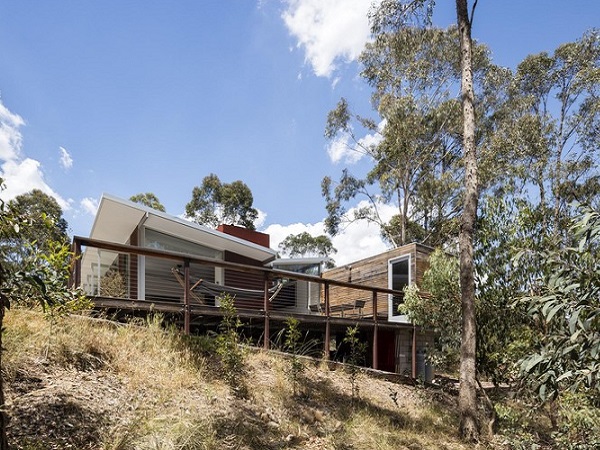
4. Sydney Blue Mountains House
Designed by Urban Possible, this one storey, three-bedroom weekender was designed to handle potential bushfires. For example, instead of having several windows, there are several three-metre-high pivoting toughened double glazed doors.

5. Mt Macedon House
Designed by Field Office Architecture, Mt Macedon House, which is located in Victoria's Macedon Ranges, features non-combustible materials and careful detailing. For example, it is clad in Corten cladding.

6. Karri Fire House
Located on a BAL 40 property, this house by Ian Weir is built on stilts and has several fire-resistant features like cavity masonry walls, concrete slabs, and shutter aids on the windows to negate the effects of heat and flames.
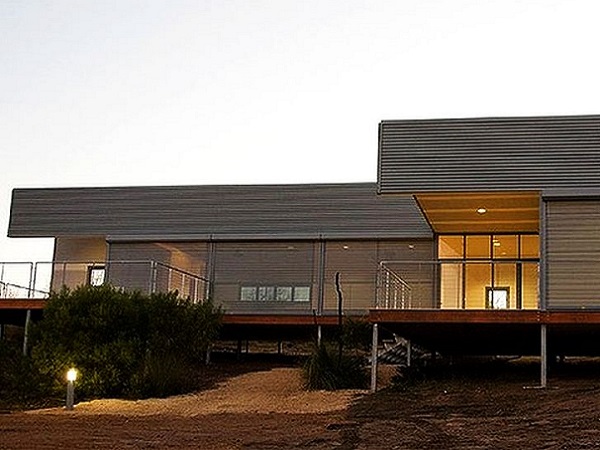
7. H House
Also by Ian Weir Architect, H House is designed to sustain itself (without any human assistance) during a bushfire. Led by research architect and Qld University of Technology (QUT) lecturer Dr Ian Weir, H House presents a model for reconciling bushfire and diversity with daily life. H House is located in the bushfire prone biodiverse landscape of Point Henry, WA.
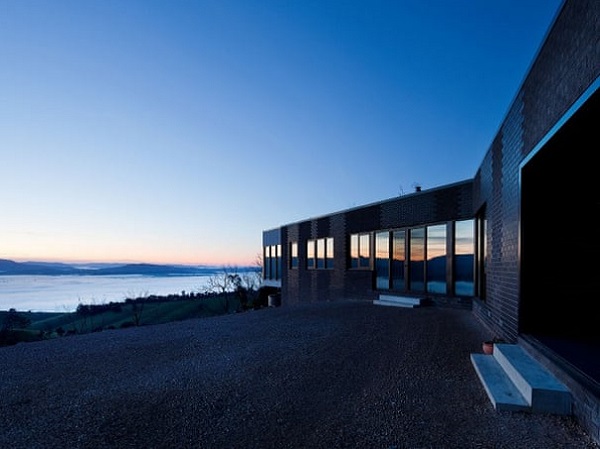
8. The Christmas Hills house
Designed by architect Clare Cousins and located in the Vic town of Christmas Hills, this house replaced a home that was destroyed in the infamous Black Saturday Fires. It meets the requirements of BAL-29, which is the second highest bush fire attack level.
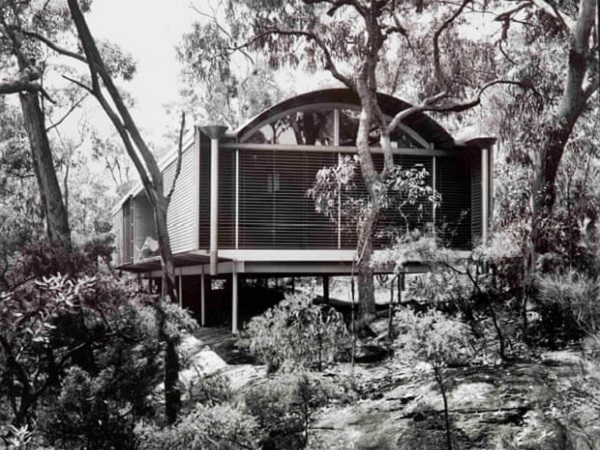
9. Ball-Eastaway house
Located at Glenorie on Sydney’s north western outskirts in NSW, Ball-Eastaway house was designed back in 1980 by Glenn Murcutt who was something of a pioneer in bushfire resistant houses. Its features include innovative leaf-shedding gutter designs, black ceramic house tiles that reflect radiant heat, sprinkler systems, and water features on the roof.

10. Compressed Earth Bushfire Resistant House
The winner of The Bushfire Building Council of Australia’s Innovation Award for the best design concept in 2015, this house by Baldwin O’Bryan Architects is certified FZ – Flame Zone, which is the highest bush fire attack level in Australia. It incorporates a low-cost building blocks scheme based around stabilised compressed earth blocks, which the architects came up with. This system is not only highly sustainable but also considerably cheaper than reinforced concrete.

